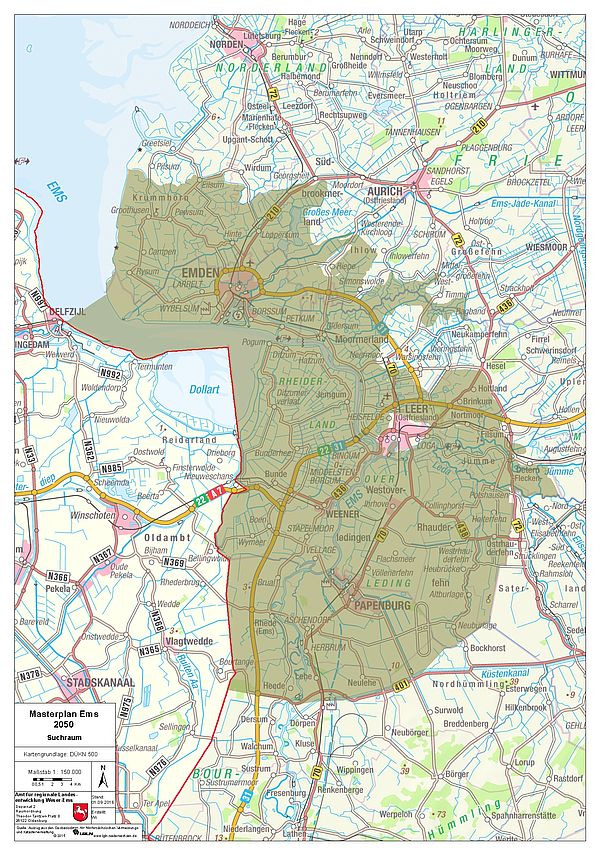700 hectares of land will be required by the year 2050 to implement the Master Plan Ems 2050. A total of 500 hectares is to serve for developing typical estuary habitats, and 200 hectares shall be provided for meadow bird conservation.
Currently this land is primarily being used for agricultural purposes. To this day the announcement of the wish to purchase this much land has caused great uproar and protest from farmers and farmers’ associations, especially in the Leer district, even before conclusion of the contract. They fear scarcity of land and higher leasing expenses. A very large, overriding target area for the space was thus determined in the Master Plan Ems 2050, largely as a reaction to this criticism. This target area includes parts of the Emsland, Leer, and Aurich districts, and the city of Emden. All sales or land exchanges only occur with the landowners' consent – no land will be confiscated. The Office for Regional State Development Weser-Ems is responsible for this.
In order to achieve equal distribution of land throughout the entire target area, and to consider agricultural and water management aspects during the acquisition of land, the Steering Board for Land Management – chaired by the Office for Regional State Development Weser-Ems – was established in April 2015. This Steering Board consists of the three affected districts (Emsland, Leer and Aurich) and the city of Emden, the representatives of the three environmental associations involved in the Master Plan Ems 2050 (BUND, NABU, and WWF), the Lower Saxony State Chamber of Commerce, the NLWKN (Lower Saxony Water Management, Coastal Defence and Nature Conservation Agency), two representatives of regional water and soil associations or dyke associations (Rheider Embankment Committee, Oldersum Drainage Association), and five regional representatives of agricultural interest groups (Chief Agricultural Society of Eastern Friesland, Society of Rural Residents of Emsland, Association of Rural Agriculture AbL Lower Saxony/Bremen, Federal Association of German Dairy Farmers, and Lower Saxony Rural Youth), as well as the Office for Regional State Development Weser-Ems (chair).
In 2016, 52 hectares of land were acquired for meadow bird conservation. They are located in the northern district of Emsland and the district of Aurich.
The land for meadow bird conservation will be leased out to local farmers after being acquired by the state of Lower Saxony. This lease will be subject to conditions that grant meadow breeders like black-tailed godwit, lapwing, curlew, redshank, and common snipes, among others, suitable breeding and feeding grounds. The land will be arranged in such a way that it will provide attractive nesting grounds for the birds. Very high water levels in the spring before mating season, for example, are very favourable.
No land has yet been acquired for the arrangement of typical estuary habitats, as these measures are largely dependent on the results of further planning and feasibility studies.






